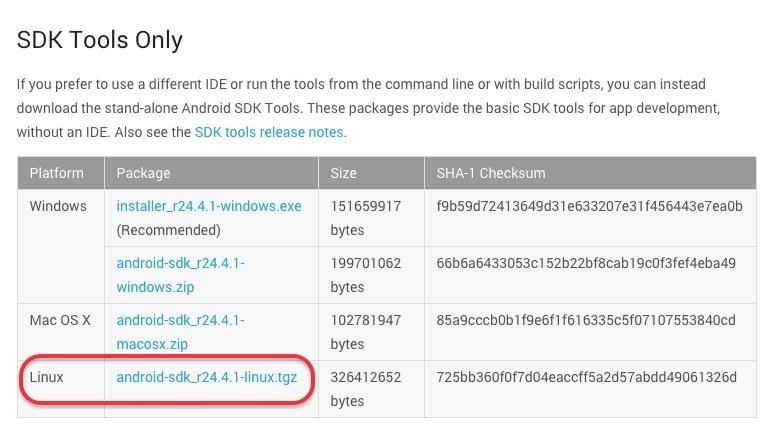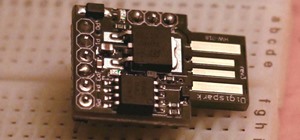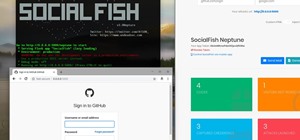Welcome back, my novice hackers!
More and more, the world is turning to and adopting the smartphone platform as the digital device of choice. People are not only using smartphones for voice communication, but also web services, email, SMS, chatting, social networking, photography, payment services, and so on.
There are 2.6 billion smartphone subscriptions in the world today, and that is expected to grow to 6.1 billion by 2020 (there are 7.3 billion people on the planet, so nearly one smartphone per person). This means that the smartphone will become the target of choice for hackers, as it can yield lots of information about the individual carrying it and may prove to be an entry point to the corporate network.
In this series, we are going to explore methods for hacking smartphones, which will usually vary by the type of operating system (iOS, Android, Windows Phone, etc.). Since Android is the most widely used operating system (presently 82.8%), it makes sense that we begin there. We will eventually explore hacking Apple's iOS (13.9%) and Microsoft's Windows Phone (2.6%). I really don't think it makes much sense to spend time on the BlackBerry operating system, as it holds only 0.3% of the market, and I don't expect it to survive much longer. Plus, its latest device uses Android anyway.
In this first installment, we will be creating a safe virtual environment where we can test various hacks. First, we will build some Android virtual devices. Second, we will download and install the Smartphone Pentest Framework. This framework, funded by DoD and built by Georgia Weidman, is an excellent tool for building and testing exploits against smartphones.
Let's get started with building and deploying the Android virtual devices to serve as targets.
Step 1: Open a Terminal
Of course, to get started, fire up Kali and open a terminal.
Step 2: Install the Required Libraries
In order to run these Android virtual devices on Debian 64-bit operating systems (e.g. Kali), we will need to install several key libraries that are not included by default. Fortunately, they are all in the Kali repository.
kali > apt-get install lib32stdc++6 lib32ncurses5 lib32zl
With these 3 libraries installed, we can now proceed by installing the Android Software Developer Kit (SDK).
Step 3: Install Android SDK
With your Iceweasel browser in Kali, navigate to Android's SDK website and download the Android SDK Tools. Make certain that you download the Linux kit. You could download and install the Windows or Mac kits and then test those virtual devices from Kali, but that will make things a bit more complex. Let's keep it simple and install everything in Kali.

Once you have downloaded it, you can extract it with the GUI archive tool in Kali, or by the command line.

Step 4: Navigate to the Tools Directory
Next, we need to navigate to the tools directory of the SDK directory.
kali > cd /android-pentest-framework/sdk/tools

Once we are in the tools directory, we can then run the Android application. Simply type:
kali > ./android

When you do, the SDK Manager will open a GUI like that above. Now, we will download two versions of the Android operating system to practice our smartphone hacking, Android 4.3 and Android 2.2. Make certain you find them among this list, click the box next to them, and click on the "Install XX packages" button. This will make the SDK download those operating systems to your Kali.
Step 5: Android Virtual Device Manager
After we have downloaded all of the packages, we now need to build our Android Virtual Devices, or AVDs. From the SDK Manager pictured above, select Tools -> Manage AVDs, which will open an interface like that below of the Android Virtual Device Manager.

Click on "Create," which will open an interface like that below. Create two Android Virtual Devices, one for the Android 4.3 and one for the Android 2.2. I simply named my devices "Android 4.3" and "Android 2.2" and I recommend you do the same.

Choose the Nexus 4 device and the appropriate Target (API 18 for Android 4.3 and API 8 for Android 2.2) and the "Skin with dynamic hardware controls." The rest of the settings you should leave to the default value, except add a 100 MiB SD card.
Step 6: Start the Android Virtual Device
After creating the two Android Virtual Devices, the Android Virtual Device Manager should look like this with two devices:

Go ahead and highlight one of the virtual devices and click "Start."

This is will start the Android emulator building your Android Virtual Device. Be patient here—this can take some time. When it has completed, you should be greeted by a virtual smartphone on your Kali desktop!

Step 7: Install the Smartphone Pentest Framwork
The next step is to install the Smartphone Pentest Framework. You can use git clone to download it at:
kali > git clone github.com/georgiaw/Smartphone-Pentest-Framework.git

Step 8: Start Apache
As will need a web server and the MySQL database, go ahead and start both of those services:
kali > service apache2 start
kali > service mysql start

Step 9: Edit the Config
Like nearly all Linux-based applications, the Smartphone Pentest Framework is configured via a plain text configuration file. We need to first navigate to the directory with the framework console subdirectory:
kali > cd /root/Smartphone-Pentest-Framework/frameworkconsole
And then open the config file with any text editor. In this case, I used Leafpad:
kali > leafpad config

We will need to edit the IPADDRESS variable and the SHELLIPADDRESS variable to reflect the actual IP address of your Kali system (you can find it by typing "ifconfig").
Step 10: Start the Framework
Now, we are ready to start the Smartphone Pentest Framework. Simply type:
kali > ./framework.py
And that should open the Framework menu, like that below.

Now we are ready to start hacking smartphones!
In future tutorials in this series, I will demonstrate how to use this framework to hack/exploit smartphones. So keep coming back, my novice hackers!
Just updated your iPhone? You'll find new emoji, enhanced security, podcast transcripts, Apple Cash virtual numbers, and other useful features. There are even new additions hidden within Safari. Find out what's new and changed on your iPhone with the iOS 17.4 update.























42 Comments
I'm extremely excited for this! Hacking smart phones sounds like it will be a lot of fun!
-Defalt
If we are using Kali linux virtual box. Do we used the IP address for kali linux or my public ip address?
Hacking smart phones sounds fantastic, especially since how much they are suspected to grow. I am extremely excited. Thanks again OTW!
-Smith
Just out of curiousity, can we expect some locked-screen hacks? I mean I think the majority of smartphones are locked by either a simple 4 digit PIN, or in Android's case, with 9 dots that user needs to connect. Do you think theres any way to hack through that?
Oh and btw, great post OTW, looking forward to this!
yes you can if debugging mode is on . In an adb shell you have to type rm /data/system/gesture.key
root@kali:~# apt-get install lib32stdc++6 lib32ncurses32 lib32zl
Reading package lists... Done
Building dependency tree
Reading state information... Done
E: Unable to locate package lib32ncurses32
E: Unable to locate package lib32zl
Hey OTW I am getting this error, i am using Kali 2.0
I believe you need to change lib32l to lib321.
Hi Nightisblack,
I had the same issue try "apt-get install lib32z1" and not "apt-get install lib32zl"
it worked for me. I hope it works for you :)
update your sources.list for >a path: /etc/apt now go https://www.kali.org/news/kali-linux-20-released/
and add link sources :
> deb http://http.kali.org/kali sana main non-free contrib
> deb http://security.kali.org/kali-security/ sana/updates main contrib non-free
and
apt-get update
apt-get dist-upgrade
reboot
Did you get a solution to your problem?
Have you tried running apt-get update?
DID IT.
AFTERWARDS SAME ERROR...
Great addition, can't wait for this series.
lets the fun begin +
Hacked by Mr_Nakup3nda
I don't not even think of this way impressive.... as always. I am excited aswell!
Great job OTW, I'm very excited for this, keep it coming :)
Very interesting, I've noticed a trend of more and more people wanting to hack smartphones so this articles comes at a perfect time.
I feel like one the bigger challenges with smartphone hacking is finding what to attack, finding the ip of the phone, opening port since the carriers might be blocking them, etc.
Cheers,
Washu
While creating new AVD with all variables filled as above for 4.3
the OK button does not come up.
Did i miss any check box???
did u assign API 18 ??
your package have not been downloaded properly(system image ARM) ... make sure android 4.3 packages are downloaded
awesome post, I just hope of this information gets leaked soon, Much we can do with this. No need to keep it hidden if the government got us programmed to the fact that they're the only ones allowed to hack.
I am having problem adding the 100 MB SD !!
I'm having the same problem
will be looking froward to learn a lot here.....
Damn this looks good thanks!
Who had to double check "photography" in the opening paragraph? Maybe I just spend too much time on the internet
in case anyone is having trouble with installing the needed libraries:
dpkg --add-architecture i386
apt-get update
apt-get install libstdc++6:i386 libgcc1:i386 zlib1g:i386 libncurses5:i386
does it work with all android devices or only nexus ? i want to test it on my samsung phone .
Awesome!
This hack was great worked fine, when can we be expecting an iphone version of this???
and after reading this.. i start to fee feel like a pro :)
??
Can i use genymotion instead of AVD for this series?
'cause genymotion is faster.
how do i solve broken packages held in my kali linux
first time commenting nut have been a visitorto this site from a long time ..... just waiting for your next arrival of hacking smartphones
When does the next part of this article come out?
Most of the exploits i have seen works only on android <4.4...so i m pretty sure this also works on same android conditions....BTW I m definately going to try it out...
Hello.
Please i'm really in need of that SPF project for academic purpose, but it is now deleted from github. is there anyone who cloned the project that can send me the source code??? I will be really thankful for that
Hello.
Please i'm really in need of that SPF project for academic purpose, but it is now deleted from github. is there anyone who cloned the project that can send me the source code??? I will be really thankful for that
Please teach how to actually use this framework for smartphone hacking.....,just can't wait....
Fantastic article, can't wait to try it out on my own device.
Thanks for all the great articles!
As a side note, SDK Tools is available through Kali's repos:
(sudo) apt-get install android-sdk
and Smartphone-Pentesting-Framework is no longer available at the link provided, but I was able to find it here:
git clone github.com/BaldyBadgersRunningRoundMyBrain/Smartphone-Pentest-Framework.git
Keep up the great work!
Hackers Can Remotely Install Malware Apps to Android Device please tutorial upload videos
Will you please update this article? I can not install the last two libraries that you specified.
Update: For all who think its an l(L) its not its a 1(one) lol I feel dumb
We can do that in android itself using termux right
Share Your Thoughts